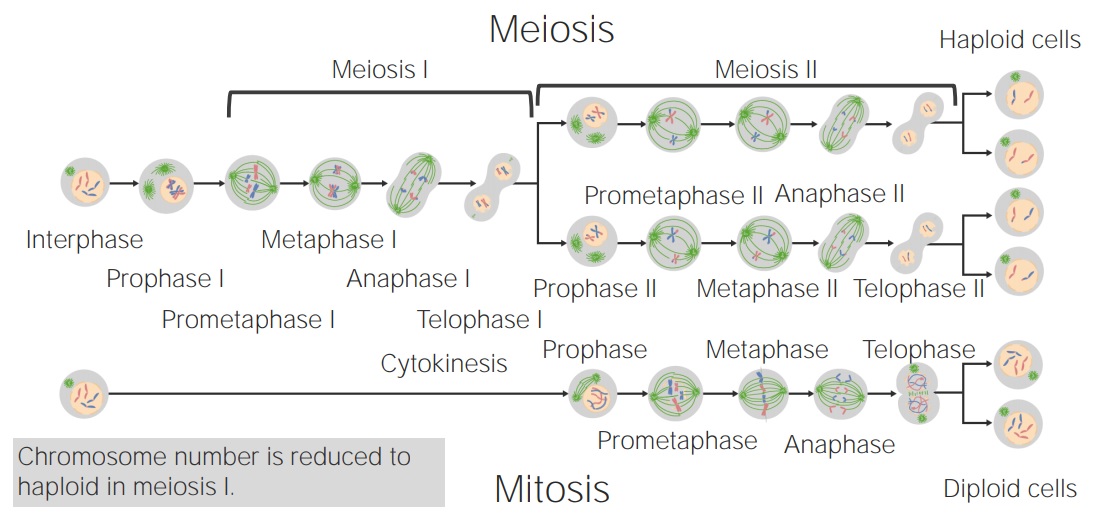Playlist
Show Playlist
Hide Playlist
Human Karyotype – Meiosis
-
Slides 13 Meiosis CellBiology.pdf
-
Reference List Molecular and Cell Biology.pdf
-
Download Lecture Overview
00:00 Nehmen wir uns einen Moment Zeit, um die Bedingungen für den Menschen zu betrachten. Die Bedingungen der menschlichen Chromosomen. Erinnern Sie sich, dass wir homologe Chromosomen haben. 23 Paare. Sie sehen so aus. Wir haben eines, das von der Mutter stammt. 00:17 Das ist hier grau dargestellt und soll die Replikation verdeutlichen. Aber sehen wir uns erst einmal nur die rote Seite an. 00:24 Und dann eine vom Vater. Das ergibt also 46 Chromosomen. Die, die grün markiert sind, werden auch Autosomen genannt. Sie sind alle an der allgemeinen Genexpression beteiligt. Dann gibt es zwei die nicht-homolog sind. Das sind die Geschlechtschromosomen. Die Geschlechtschromosomen sind das X und das Y. 00:45 Diese sind Ihnen wahrscheinlich bekannt. Sie sind nicht-homolog, da sie nicht genau übereinstimmen. 00:51 Das Y ist winzig. Da ist nicht viel drauf. Und das X ist viel größer. Ich weiß es nicht. Vielleicht hat es mehr Komplexität und das erklärt einige der Unterschiede, die zwischen Männern und Frauen existieren. Wie auch immer, wir machen weiter. 01:03 Während der Meiose teilen wir jedes dieser Chromosomen in einzelne Eizellen oder Gameten. 01:10 Wir haben also von jedem eine Kopie. Manchmal hat man am Ende ein X und manchmal ein Y, wenn es um die Spermatogenese oder die Erzeugung von Spermien geht. Und bei Frauen werden enden wir immer mit X.
About the Lecture
The lecture Human Karyotype – Meiosis by Georgina Cornwall, PhD is from the course Cell Cycle and Cell Division.
Included Quiz Questions
Which statement about the reductive division of meiosis is INCORRECT?
- During reductive division, sister chromatids migrate to opposite poles of the cell.
- During reductive division, homologs migrate to opposite poles of the cell.
- During reductive division, centromeres do not divide.
- At the end of the reductive division, each daughter nucleus has half as many centromeres as the parent nucleus.
- After reductive division, each daughter cell has 23 chromosomes.
Which of the following is INCORRECT regarding the human karyotype?
- Ovum and sperm are produced via somatic cells in humans.
- A hepatic cell in humans contains 23 pairs of chromosomes in its nucleus.
- Gametes (ovum or sperm) are haploid.
- Human cells contain 22 pairs of autosomes and a pair of sex chromosomes.
- The nuclei of skin cells in a human male always contain nonhomologous sex chromosomes.
Customer reviews
5,0 of 5 stars
| 5 Stars |
|
5 |
| 4 Stars |
|
0 |
| 3 Stars |
|
0 |
| 2 Stars |
|
0 |
| 1 Star |
|
0 |




